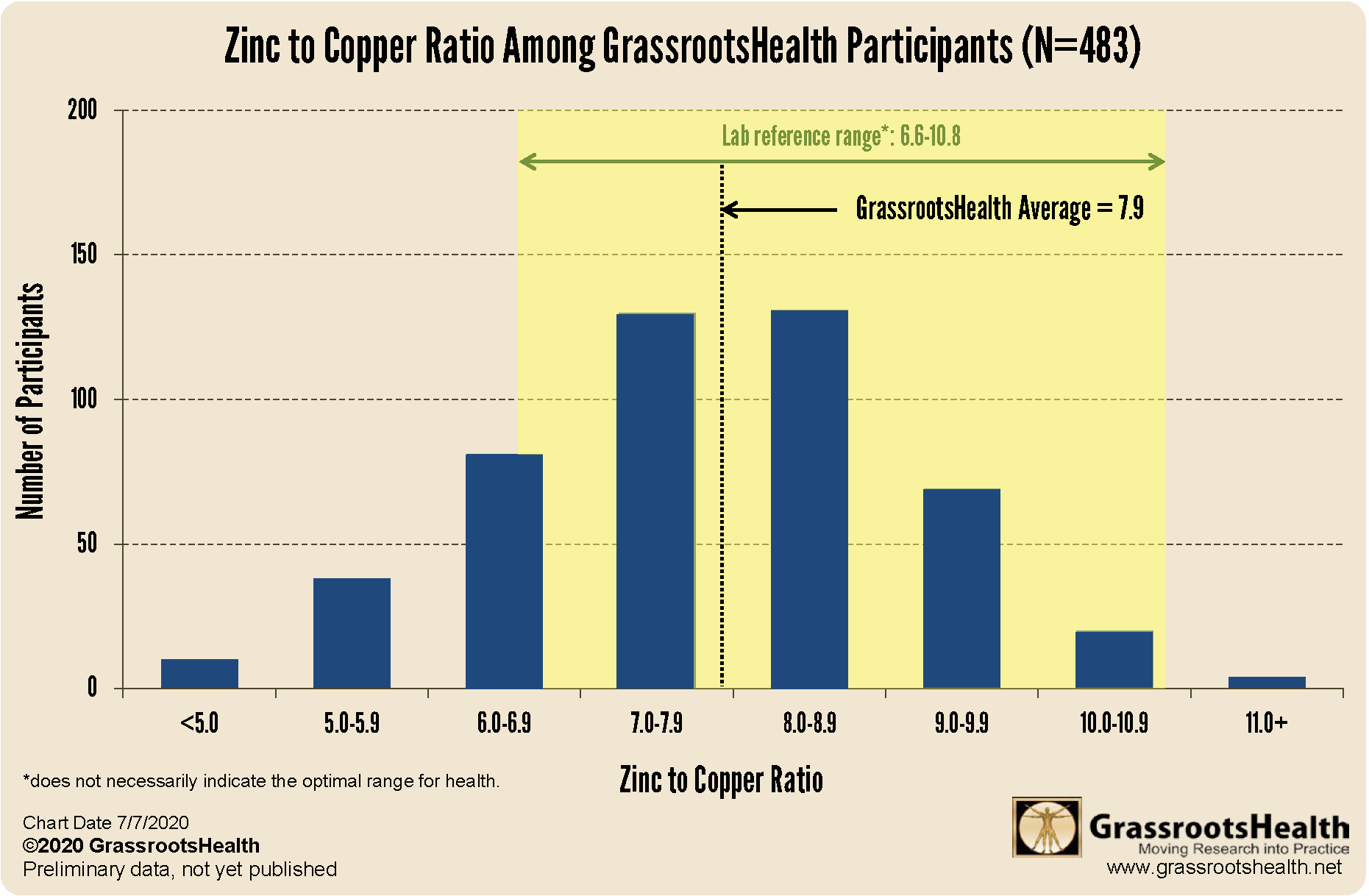Published on July 9, 2020
Zinc and copper are important co-factors for enzymes in the body. Zinc is necessary for growth and development, immune function, bone metabolism, and central nervous system function. Copper helps keep bones, skin, nerves, and the immune system healthy and working properly.
 In the spring of 2019, GrassrootsHealth started offering a zinc to copper ratio test as part of the Elements Panel, which includes testing your vitamin D level along with essential elements magnesium, selenium, zinc, and copper, and toxic heavy metals cadmium, lead, and mercury. One of the most common trace metal imbalances is high copper and low zinc. Some evidence suggests that this imbalance could contribute to a number of health conditions such as headaches, muscle and joint pain, hyperactivity, premenstrual syndrome, and depression, so it is important to know the ratio between these two essential elements.
In the spring of 2019, GrassrootsHealth started offering a zinc to copper ratio test as part of the Elements Panel, which includes testing your vitamin D level along with essential elements magnesium, selenium, zinc, and copper, and toxic heavy metals cadmium, lead, and mercury. One of the most common trace metal imbalances is high copper and low zinc. Some evidence suggests that this imbalance could contribute to a number of health conditions such as headaches, muscle and joint pain, hyperactivity, premenstrual syndrome, and depression, so it is important to know the ratio between these two essential elements.
Zinc to Copper Ratios Among GrassrootsHealth Participants
Among the 483 participants who tested their zinc to copper ratio, the average ratio was 7.9 which falls within the lab reference range (6.6-10.8); this reference range indicates the range of typical results found in the population the lab serves but does not necessarily indicate the optimal range for health.
The optimal range for the zinc to copper ratio is not known. Your ongoing participation in this project will contribute greatly to knowing what levels are optimal for health. We will continue to track this data and report any results back to you.
Ensure your other nutrient levels are within range! Help support a healthy immune system and more by testing today to find out your level of zinc, vitamin D, and other nutrients important for a healthy immune response.
Are You Getting Enough Vitamin D to Help Yourself?
Through GrassrootsHealth Nutrient Research Institute, you can test your vitamin D levels along with your essential elements magnesium, copper, zinc and selenium, toxins such as lead, mercury and cadmium, as well as your omega-3 levels, inflammation levels and thyroid stimulating hormone (TSH) level. Find out your levels today! Log on to the test selection page (click the link below) to get your tests and see for yourself if your levels can be improved.
Make sure you track your results before and after, about every 6 months!
How can I track my nutrient intake and levels over time?
To help you track your supplement use and nutrient levels, GrassrootsHealth has created the Personal Health Nutrient Decision System called
For each specific supplement, you can track what days you take it, how much, and many other details. This will help you know your true supplemental intake and what patterns of use work for you to reach and maintain optimum nutrient levels. Check it out today!








